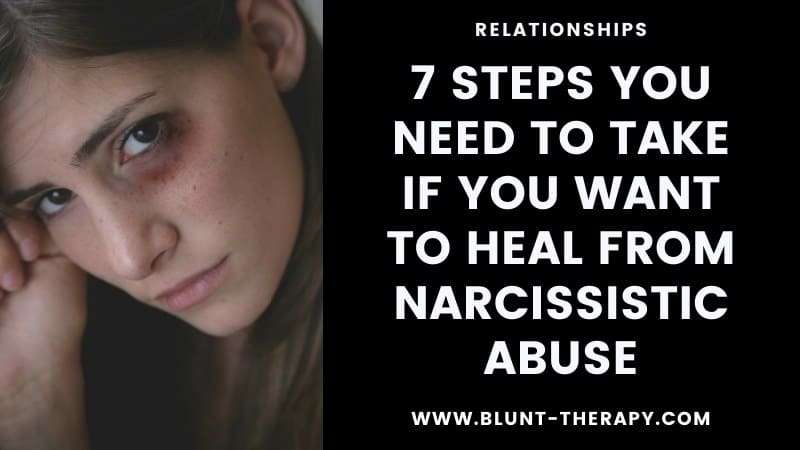Table of Contents
Affiliate link notice: As an affiliate of BetterHelp and other third-party vendors, We will receive compensation if you make a purchase using the links provided on this page. For more information, visit our disclosure page.
Last Updated on December 12, 2021 by Randy Withers, LCMHC
People with Borderline Personality Disorder (BPD) tend to spark intense positive or negative emotions in those around them.
When someone with BPD likes you, you’re on top of the world. When you’re on their bad side, you feel as though the whole universe has turned against you.
“People with BPD are like [patients] with third-degree burns over 90% of their bodies. Lacking emotional skin, they feel agony at the slightest touch or movement.”
— Dr. Marsha Linehan

Borderline Personality Disorder
What’s this about BPD?

The person with Borderline Personality Disorder suffers, and they suffer profoundly. Imagine loving your spouse one moment, hating them the next, then loving them again a few hours later — and not knowing why.
Imagine having to push others away before they abandon you. Sometimes abandonment is so frightening that alienating people you love seems the safest way to survive.
How about living in a world where everyone feels a need to “set limits” with you?
People talk about you, “yeah, she’s borderline,” and you see that same look on everyone’s face.
They judge you before they meet you. You describe the situation to people you call friends, and they have no sympathy.
“Why are you so nasty?” they say. “It’s your fault people treat you like that.”

How Is Borderline Personality Disorder Diagnosed?
BPD is a psychiatric diagnosis marked by intense mood swings, problems with identity, difficulty tolerating stress, insecure relationships, and a tendency toward hurting oneself. Symptoms include the following:
1. Intense mood swings and sensitivity to rejection.
People with Borderline Personality Disorder tend to have extreme mood swings, going from happy to suicidal to angry and back to happy in a matter of hours. Mood is very reactive.
It’s not done purposefully. The emotions themselves are out of whack. The trigger can be anything… a thought, memory, or something in the environment.
Sometimes the emotional effect is a good one. Tiny bits of sun bring ecstasy. A hug makes the world fit perfectly.
But faced with a negative trigger, either real or perceived, the person with BPD feels their world buckle underneath them.
This negative emotion is unbearable, and it seeps into everything. It takes over.
Sadness or shame or rage affects thinking. They take over identity. Personality itself sways with each change in mood.
2. Distorted ego and troubled friendships.
BPD sufferers struggle with an unstable self-image. Their identity is entirely dependent on their relationship with others. They can’t tolerate being alone. As mentioned, they’ll go to great lengths to avoid abandonment.
Even with social support, some people with BPD tend to oscillate between self-loathing and blaming others for their problems.
This causes help-rejecting behaviors and a complicated cycle of pushing people away when desperate for company.
Relationships are usually intense. They’re short-lived, chaotic, and problematic. The borderline’s reactivity triggers reactivity in others, worsening the cycle.

3. Black and white thinking, “playing games,” and splitting.
BPD sufferers see things as all good or all bad, with little in between. This tendency to separate life into two categories often splits the environment, including the people around them.
The individual with Borderline Personality Disorder consciously or unconsciously uses this “split” to get their needs met; they play people against one another.
Here’s an example.
Imagine George has BPD. He likes Jane and dislikes Jack. To split Jane and Jack, George exaggerates Jane’s good qualities. He gains her confidence and sympathy. Soon Jane will do anything to defend him.
Meanwhile, George assigns negative qualities to Jack. He talks to everyone about the “bad things Jack does.” Now Jack already distrusts George, and George’s behavior only upsets him further. Like Jane with her exaggerated kindness, Jack develops exaggerated hostility.
What’s George’s purpose? Jill’s sympathy grows at the sight of Jack’s hostility. She comes running to George’s defense whenever he needs it. The more Jack complains, “Can’t you see how manipulative he is?” the more Jill counters, “Can’t you see you’re causing it?”
In the end, George sits back while everyone argues. He has won himself an advocate and displaced his own chaos onto others.
Because of these behaviors, providers and families tend to respond by setting harsh “limits” on the sick person. These limits can wax on punishment if the situation gets bad enough.
4. Impulsivity, agitation, and violence towards self/others.
People with BPD injure themselves. They cut. They burn. Some hurt themselves out of boredom or shame. Others experience it as a craving. Still, others report that physical pain blocks mental suffering, bringing relief to that suffering.
Patients also use threats of suicide to cope with emotion. Saying “I want to kill myself” triggers extra support by those around us; if you’re feeling abandoned, it’s a fast and effective way to get attention.
People with BPD also threaten suicide to get their needs met. It’s a simple statement, and it scares everyone: “If you don’t give me what I need, I’ll end my life.”
When family or friends call their “bluff,” they’ll often hurt themselves to save face – or out of spite.
There’s a difference between self-injurious behaviors and a suicide attempt, but one can turn into the other without trying.
Emotions are so powerful, relationships so intense and problematic, and thoughts so easily influenced by one’s emotional climate that a single mistake can become deadly in seconds.
BPD has a very high suicide rate. One in every ten people with the disorder will die by their own hand.
Borderline Personality Disorder sufferers can also become extremely agitated and aggressive, especially if they feel their distress isn’t acknowledged or their needs aren’t being met.
Shop now at Amazon.com
5. Other characteristics.
BPD as an illness triggers a need for immediate gratification; emotion and thought and desire are experienced as urgent.
Occasionally BPD sufferers lose touch with reality, experiencing vague hallucinations or paranoia, or feeling estranged from their surroundings. The paranoia can be mild but pervasive; people with BPD often have problems trusting others. They constantly second-guess other people’s intentions.
For your reference, here are the diagnostic criteria for Borderline Personality Disorder. This comes from the DSM5, which is what clinicans use to diagnose mental and personality disorders.
For a diagnosis of BPD, 5 of the 9 criteria must be met. However, it is important to remember that only a trained mental health professional can make an appropriate diagnosis. It is never a good idea to self-diagnosis.
BPD is diagnosed only when the symptoms are chronic, widespread, and interfere with every arena of the individual’s life. Providers usually require multiple visits before establishing a diagnosis.
- Chronic feelings of emptiness
- Emotional instability in reaction to day-to-day events (e.g., intense episodic sadness, irritability, or anxiety usually lasting a few hours and only rarely more than a few days)
- Frantic efforts to avoid real or imagined abandonment
- Identity disturbance with markedly or persistently unstable self-image or sense of self
- Impulsive behavior in at least two areas that are potentially self-damaging (e.g., spending, sex, substance abuse, reckless driving, binge eating)
- Inappropriate, intense anger or difficulty controlling anger (e.g., frequent displays of temper, constant anger, recurrent physical fights)
- Pattern of unstable and intense interpersonal relationships characterized by extremes between idealization and devaluation (also known as “splitting”)
- Recurrent suicidal behavior, gestures, or threats, or self-harming behavior
- Transient, stress-related paranoid ideation or severe dissociative symptoms.
“It’s a lot like being inside a burning building and yelling for help, while the fireman outside says, ‘what are you so upset about? Just climb over the rubble and come on out!'”
— Alexander L. Chapman

What’s normal about BPD (and what isn’t)?
We all have mild borderline symptoms, especially when stressed. Who doesn’t get sensitive to rejection when they’re blue? Who doesn’t have moments of unexplained anguish, when we say things we later regret?
And what about those deep worries that your lover is planning to leave? Is that fear of abandonment?
The difference between normal and mild BPD isn’t black and white. Adolescents will sometimes have soft borderline features as part of their development; they usually mature out of them.
When symptoms persist beyond the teenage years, BPD becomes a consideration, but not all “borderline characteristics” mean a borderline diagnosis.
Intense mood swings, impulsivity, reactive emotions, relationship difficulties, and suicidal thoughts can also be related to bipolar disorder.
Tendency to lose touch with reality, rage problems, irritability, and aggression are also associated with post-traumatic stress disorder.
Agitation and aggression can be found in many disorders.
“It is as if my life were magically run by two electric currents: joyous positive and despairing negative — whichever is running at the moment dominates my life, floods it.”
— Sylvia Plath (note Ms. Plath might have had bipolar disorder, not BPD)
What causes Borderline Personality Disorder?
Some theorize it’s a developmental problem, caused by a chaotic, invalidating environment during early childhood.
This is the home where a kid’s mother praises him for a behavior on day one, then slaps him on day two for doing the same thing. This is the environment where a little girl’s good behavior is ignored, but her tantrums are rewarded with food and attention.
Sexual abuse is common. Most people with Borderline Personality Disorder are victims of severe, repetitive childhood trauma.
The theory of an invalidating childhood explains a lot. If as a child you didn’t get fed unless you acted out, then you had to kick and scream often and emphatically! Anything less would have meant starving to death. “Kicking and screaming” worked as a necessary coping skill.
We all recycle “successful” coping skills and carry them over to adulthood.
The adult with BPD uses that same skill to deal with most issues, despite catastrophic consequences, because no one ever taught them there are kinder, healthier, cooler, less painful ways to do things.
It’s their “default” reaction, and all they know is it kept them alive all those years.
“Living with BPD is pure confusion. It’s always like, ‘Am I allowed to be upset
— HealthyPlace.com
about this thing or am I being oversensitive?'”
What kind of therapy is best for borderline personality disorder?

The best talk-therapy for BPD is called dialectical behavioral therapy (DBT).
DBT is a six-month program that focuses on safety, mindful awareness, emotion regulation, distress tolerance, and interpersonal effectiveness. The overall goal is to replace unhealthy coping skills with healthy ones.
Are medications helpful?
Although therapy is primary, medication can also be helpful.
- Antidepressants and anxiety-busting medications can be helpful for depression, anxiety, suicidal thoughts, and impulsivity.
- Mood stabilizers can help with mood swings, impulsivity, agitation, racing thoughts, and aggression.
- Anti-psychotics are helpful for reality-testing. They also reduce agitation, aggression, and paranoia.
What do I do if I think I have BPD?
Sometimes borderline personality disorder hits close to home. If you believe you have the disorder, reach out to a psychiatrist and therapist and get connected.
Providers may not be perfect, but they can be great advocates if you let them. Also, if it’s offered in your community, consider signing up for a DBT course.
Alternatively, check out self-help DBT books or websites that offer free DBT resources.
Whatever you do, get professional treatment. The right therapy and medications can jump-start stability and long-term joy into your life.
“Ironically, your newly experienced vulnerability — the feeling that you are now exposed for all the world to see, that all your weaknesses are now visible — is the very thing that can save you.”
— Merri Lisa Johnson
References
- Borderline Personality Disorder vs. Bipolar Disorder: Understanding the Differences
- The 5 Most Common Symptoms Of Borderline Personality Disorder
- Borderline personality disorder: current drug treatments and future prospects
- Suicidality in Borderline Personality Disorder
- Borderline Personality Disorder (BPD) Criteria for Diagnosis










Right here is the perfect web site for anybody who really wants to find out about this topic. You know so much its almost hard to argue with you (not that I really will need to…HaHa). You definitely put a brand new spin on a subject that has been written about for decades. Wonderful stuff, just wonderful!